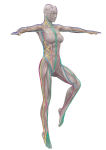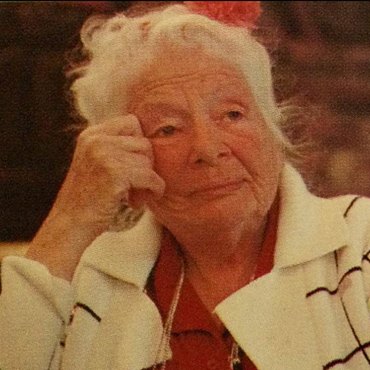STRUCTURAL INTEGRATION
Structural Integration is a form of manual therapy that releases tight, shortened fascia supporting the muscles of our posture and movement patterns to improve skeletal alignment and increase mobility. The work can be done as a series to balance the entire body or particular elements of the series can be used to correct specific problems.
 Fascia is the pliable and strong connective tissue found throughout the body that provides form and support for every structural element: muscle, bone, joint, organ, vessel. Connecting everything like a web, fascia enables the body to bend and stretch, helps coordinate complex muscle actions, absorbs and disperses shock, and does so with continual communication while we are active or asleep.
Fascia is the pliable and strong connective tissue found throughout the body that provides form and support for every structural element: muscle, bone, joint, organ, vessel. Connecting everything like a web, fascia enables the body to bend and stretch, helps coordinate complex muscle actions, absorbs and disperses shock, and does so with continual communication while we are active or asleep.
The fascia tightens when we overwork our muscles, perform repetitive motions, or for those of us with more sedentary occupations, when we move too little. Injury, scoliosis, leg length differences, arthritis, or simple aging may cause the fascia to become dehydrated and stiff and to develop adhesions that bind structures that need to be independent. This can lead to imbalances between muscle groups and can often cause pain and further injury.
THE ANATOMY TRAINS SERIES
 In the 1950s, Dr Ida Rolf pioneered a series of sessions meant to free restricted fascia to align the body and improve movement. She was inspired by the work of osteopathic physicians who recognized that the fascia was connected throughout the body and that damage to one region affected the body more broadly.
In the 1950s, Dr Ida Rolf pioneered a series of sessions meant to free restricted fascia to align the body and improve movement. She was inspired by the work of osteopathic physicians who recognized that the fascia was connected throughout the body and that damage to one region affected the body more broadly.
In the 1990s, her student, Tom Myers, updated the series by identifying continuous reinforced chains or lines of fascia connecting the muscles along prominent movement patterns. Myers called these fascial lines anatomy trains, and his series Anatomy Trains Structural Integration. The fascia, thus reinforced, helps the body avoid injury under heavy loads while maintaining appropriate posture when standing, walking, twisting, reaching, etc. A full series is used to address faulty movement patterns and reset them throughout the entire body, while subsets of the full series may be directed to specific restrictions in any number of movement chains.
The fascia, thus reinforced, helps the body avoid injury under heavy loads while maintaining appropriate posture when standing, walking, twisting, reaching, etc. A full series is used to address faulty movement patterns and reset them throughout the entire body, while subsets of the full series may be directed to specific restrictions in any number of movement chains.
ATSI Sessions
The Anatomy Trains Structural Integration series of 12 classic sessions frees the tight fascia of the muscles controlling the primary movement patterns that run from head to toe through your body. The first four sessions focus on freeing the movements around the outer surface of the body that includes the front and back line movements of flexion and extension, the side movement lines of side bending and twisting, along with front and back movement patterns of the shoulders and arms. The middle four sessions open the fascia of the muscles that control the stabilizing, core movements that lie closer to the spine and that have a large impact on posture. The final four sessions integrate the more surface sleeve movements with the deeper core stabilizing movements to encourage overall healthier movement habits and enable you to attain the goals that are important to you. This work will remain with you as you move in the world and continue to embrace and enlarge your understanding of your body.
In preparation, Laura will discuss your medical history and goals, and before each session she will look for restrictive movement patterns influencing your structure and the way you feel. You will be wearing underwear or a bathing suit so that she can see you and watch your gait. This also makes it easier for her to move your body in strategic ways to free the tight fascia. She may also ask for your help in freeing the tissue by requesting that you move in certain ways. After each session she will will offer you movement exercises or lifestyle suggestions that can reinforce and maintain your progress.
